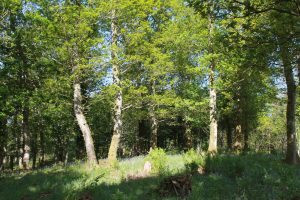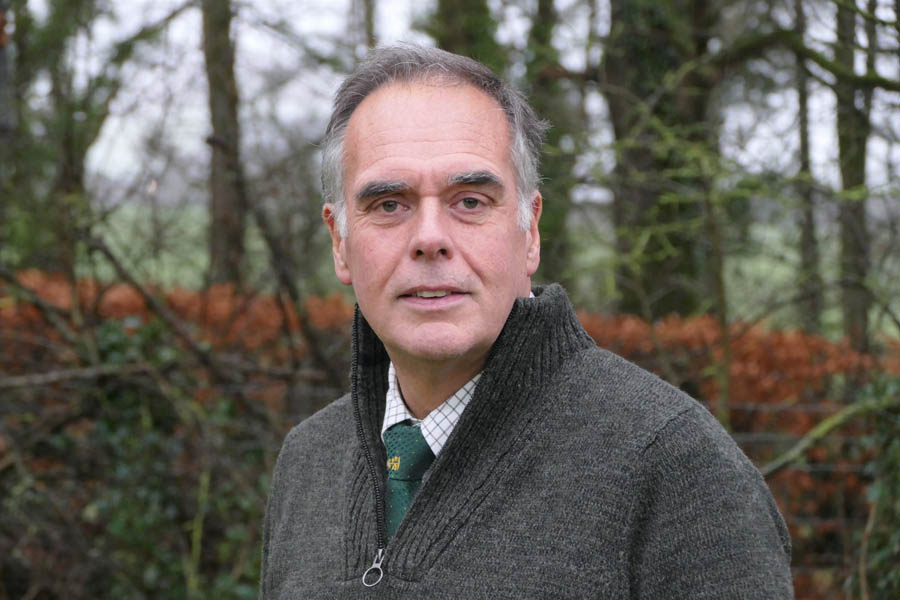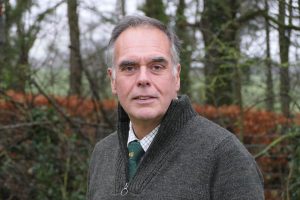As new research highlights the benefit of protecting mature woodlands, we look at long-term woodland plans for mature woodland to ensure they are healthy and diverse.
Keith Muir, Davidson & Robertson’s Head of Forestry, has been looking at new research which clearly vindicates what many foresters have known for years – mature woodlands are far more important to the fights against climate change and biodiversity loss than has been credited in the past.

A new report published in the Journal of Ecological Solutions and Evidence, states that UK forests lock away twice the amount of carbon as previously thought. The research, conducted in a typical UK deciduous woodland, highlights the importance of our mature broadleaf trees which capture and store far more carbon than first was thought. So, is now the time to have a longer-term plan for these forests?
Keith Muir, D&R Associate Director said “Speak to a forester and they will tell you that all forests need to be managed to reach their full potential and ensure succession. That is as important for long term woodland as it is for the mass planting of coniferous forests which have become such a large part of today’s forestry industry.
“Coniferous forests provide a massive amount of timber into our construction industry and small roundwood markets for things like, roof trusses, sterling board, MDF, pulp and biomass. They are also amazing at soaking up carbon dioxide at a far faster rate than broadleaf trees in their earlier years. Many would argue that coniferous forests are a key to reducing our carbon dioxide within the time scales we need, but their life cycle means they are only there for up to 60 years before they are removed, and the land replanted with the next crop.
“This latest report from the Journal of Ecological Solutions is good news for those with native or old growth broadleaf woodlands and goes some way to burst the myth that these woodlands have less value.
“Researchers used lasers to three-D map over one thousand trees in Wytham Wood in Oxfordshire, allowing their mass to be accurately measured. Wytham Wood is a typical (and much studied) UK deciduous forest In the past, the only way to do this was to cut a tree down, resulting in the loss of a perfectly healthy tree in name of science.
“The research clearly vindicated what foresters have known for years, that these mature woodlands are far more important in the fight against climate change and biodiversity loss than they had previously thought.
“Our mature broadleaf woods are a tremendous vault of biodiversity and carbon sync, as well as a major source of strong timber. They have been overlooked by landowners who may see them as a scenic backdrop to their estates – that is certainly not the case now. At Davidson & Robertson we are proactively creating Long-Term Forest Plans that map out when, how and what needs to be done within the woodland area for up 75 years with reviews done at 5-year intervals.”
Broadleaf woods are natures lifeline
Broadleaf woodlands support a myriad of biodiversity in the shape of mosses & lichens we all take for granted. Most people do not realise that the more lichen present means the cleaner the air is that we breath. They are the Canary of the tree world!
The small insects that live and survive amongst the leaves and bark – both on the trees and on the ground, are the life blood of our bird communities as well as several smaller mammals such as hedgehogs. The timber they create can be used in furniture making or high-end carpentry as well as firewood and charcoal. So, should you look after those woodlands or just let them be?
Keith said “We could leave them be, but they would naturally die out because forests move! As a woodland matures its seed is continually being spread, and because light is at a premium, the seeds that are spread outside the shade of the canopy germinate more easily. It’s the same when a massive old tree falls creating a naturally sunlit glade. Today, space is at a premium, and allowing a woodland to move across the land naturally is just not possible. If we waited for all the old trees to fall, we would end up with a fragile, unhealthy woodland that would probably be recolonised by exotic or non-native species.”
Long term forestry plans can ensure healthy diverse woodland
There is a solution to ensuring healthy and diverse woodland says Keith, “We need to create Long-Term Forestry Plans (LTFP). These plans set out how the woodland will be managed to ensure that no one species dominates, and a diverse age structure is maintained. This would happen naturally as the woodland moves across the landscape, but as we are unable to allow this to happen, we must recreate this within the woodland matrix and existing footprint.
“A forester will allow some trees to die naturally creating a vital deadwood component and then remove groups of trees to create sunlit glades. These glades may well have a great seed source just waiting to be released with light, others might require enhanced planting to ensure the species of choice regrows. The trees that are removed can be part of a managed program of timber removal that generates income from high quality saw logs or sought-after firewood.”
If you have mature broadleaf woodland on your land, now is the time to take another look at how it is managed to see if more can be done to improve it for the longer term.
Grants are available for creating an LTFP over a certain size, which can be a very good investment in your land holding and the carbon sync you are protecting. For more information contact Keith Muir on 07379 495517.




